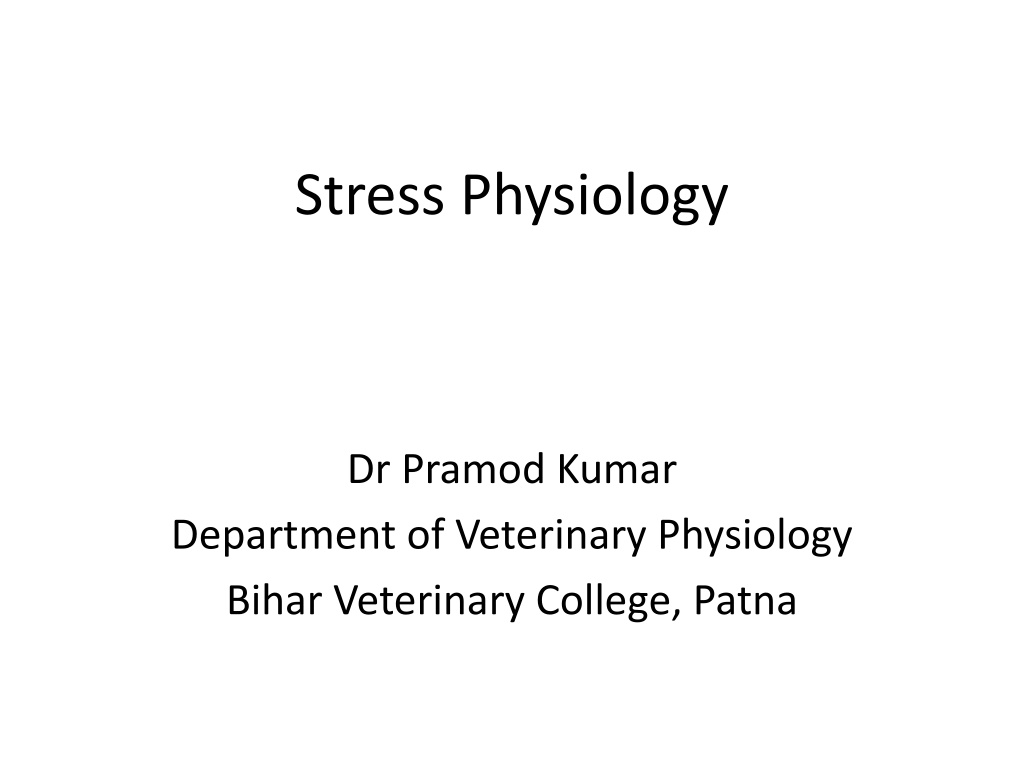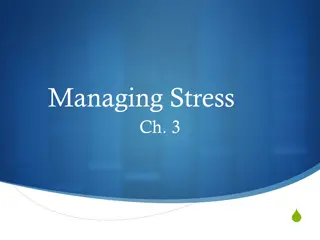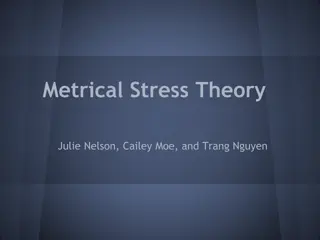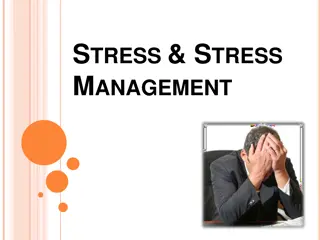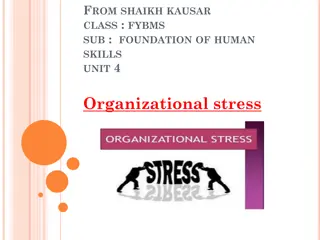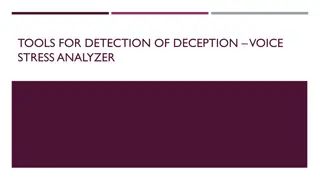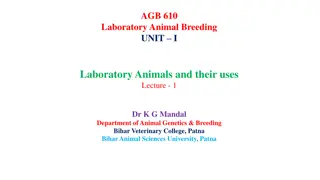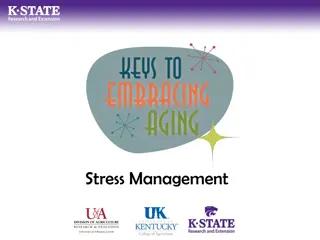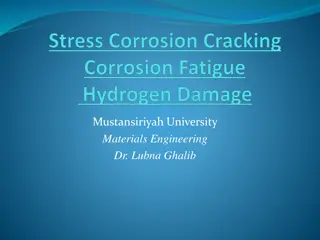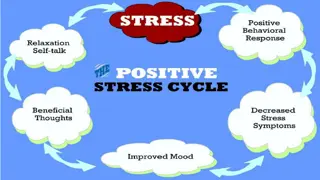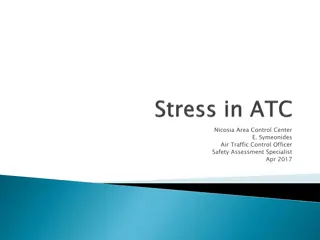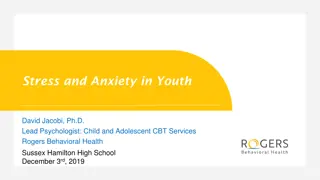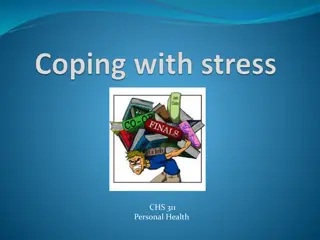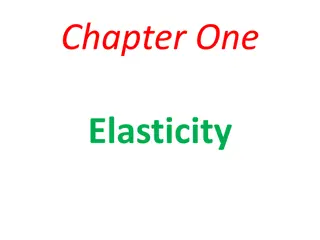Stress Physiology in Animals
Stress in animals involves various physiological responses from the nervous and endocrine systems to cope with challenging situations. This includes the fight-or-flight response, release of hormones like cortisol and adrenaline, and effects on the body's organs and systems. Hans Selye's General Adaptation Syndrome model explains how animals go through different phases when dealing with stressors. Overall, stress affects the animal's energy levels, immunity, and social behaviors.
Download Presentation

Please find below an Image/Link to download the presentation.
The content on the website is provided AS IS for your information and personal use only. It may not be sold, licensed, or shared on other websites without obtaining consent from the author.If you encounter any issues during the download, it is possible that the publisher has removed the file from their server.
You are allowed to download the files provided on this website for personal or commercial use, subject to the condition that they are used lawfully. All files are the property of their respective owners.
The content on the website is provided AS IS for your information and personal use only. It may not be sold, licensed, or shared on other websites without obtaining consent from the author.
E N D
Presentation Transcript
Stress Physiology Dr Pramod Kumar Department of Veterinary Physiology Bihar Veterinary College, Patna
Stress Any event which an individual finds difficult to cope with is called a stressor. The stress may be physical, psychological or socio-culture. Animals have to endure many stressors in their natural environments. For eg, food shortages, survivability from predator or parasites, conflicts with group members, fluctuations in food and water availability and temperature.
Stress = Nervous system + endocrine system to prepare the body for a challenge. Physiological response - The fight-or-flight sympathetic nervous system response works to keep alive, like release of endorphins, dopamine and other neurotransmitters Autonomic nervous system : Effects via PSNS (Trophotropic response) are inhibition, slowing and restorative functions Effects of neural activation via SNS (ergotropic response) are generalized arousal.
Adrenocorticotropic Hormone, Corticotropin Releasing Hormone increases energy and reduce inflammation, histamines and immunity at ACTH axis General Adaptation Syndrome was proposed by Hans Seyle (1956 ) as an integrative model for the stress response. It is tri- phasic phenomenon which involves alarm, resistance and exhaustion phase Epinephrine effects heart rate and stroke volume: acts on blood and resources to non- essentials like guts, reproductive, skin, heart, brain, lungs, skeletal muscle and Glucocorticoid
Other effects: release stored nutrients from liver and fat into blood stream send WBCs to battle stations in skin during injury Oxytocin released during stress and makes us seek out social connections Stress released less cortisol and more oxytocin (vasodilation) and repairs damaged cardiac muscle from inflammation stress, combats
